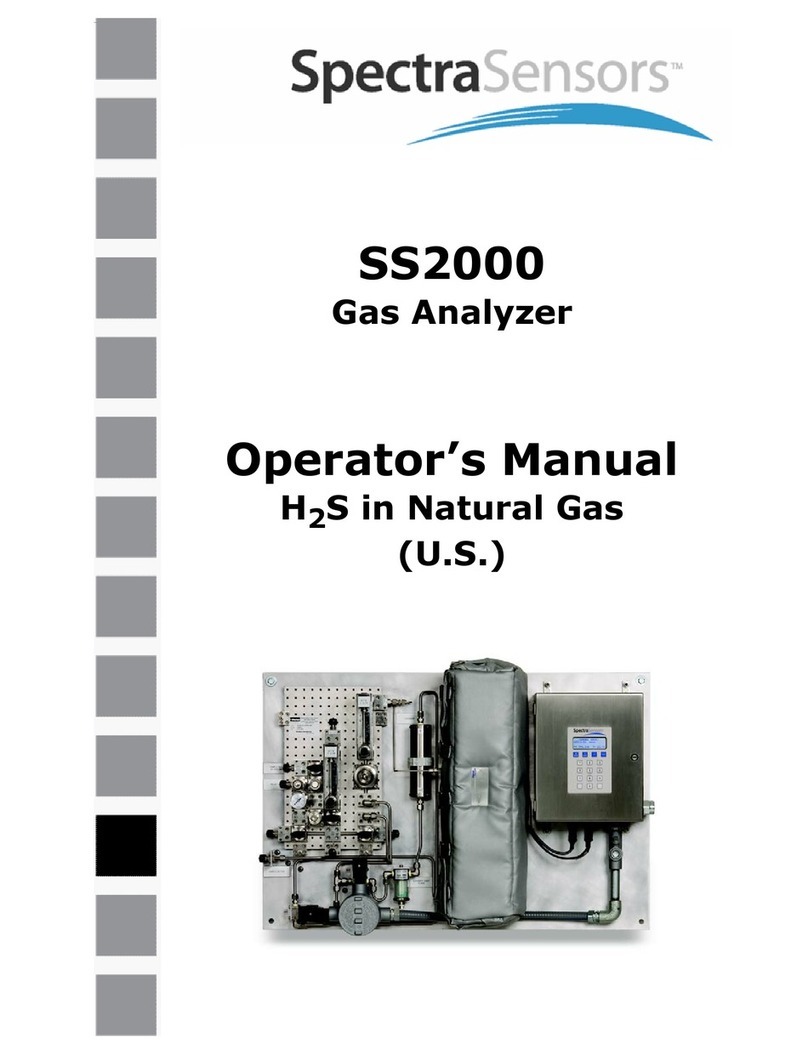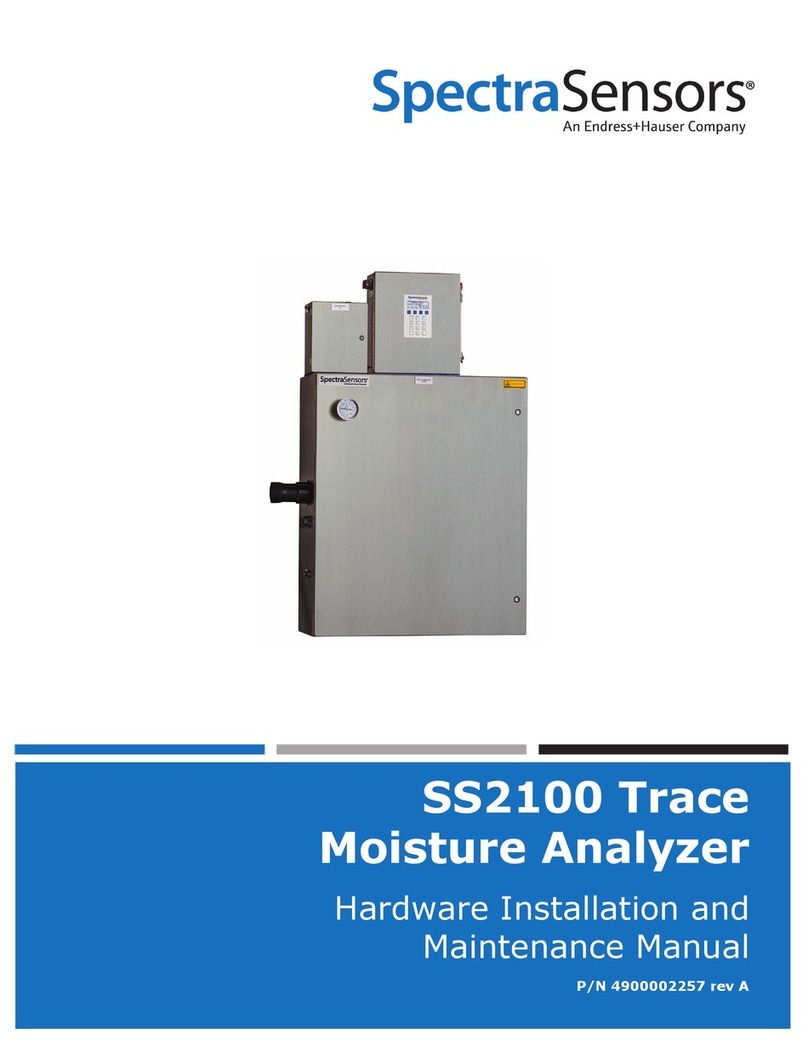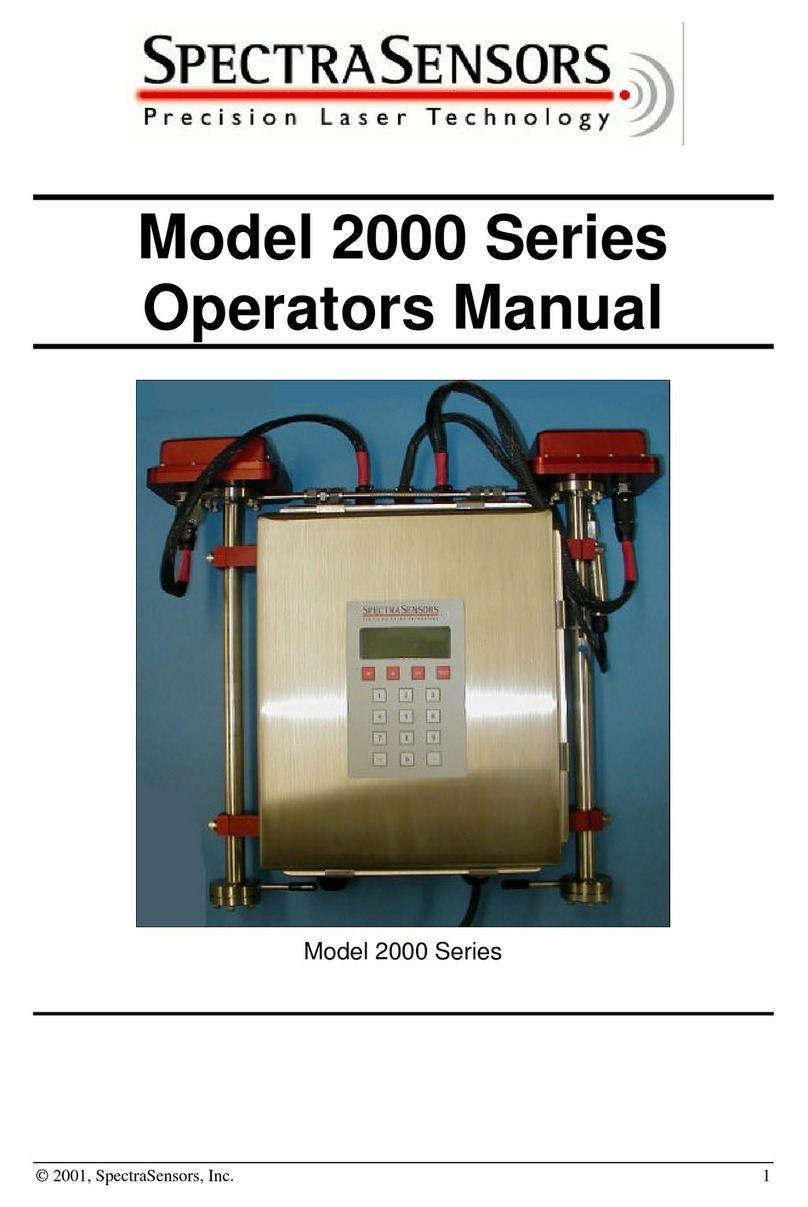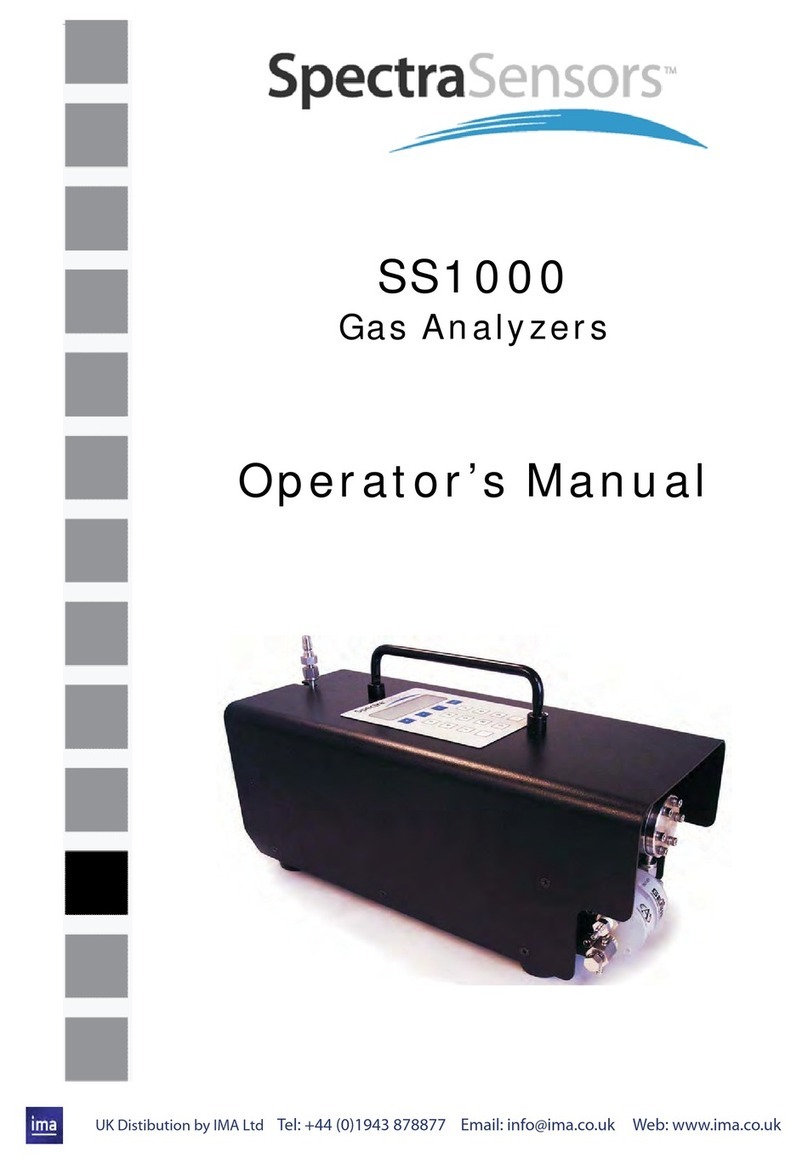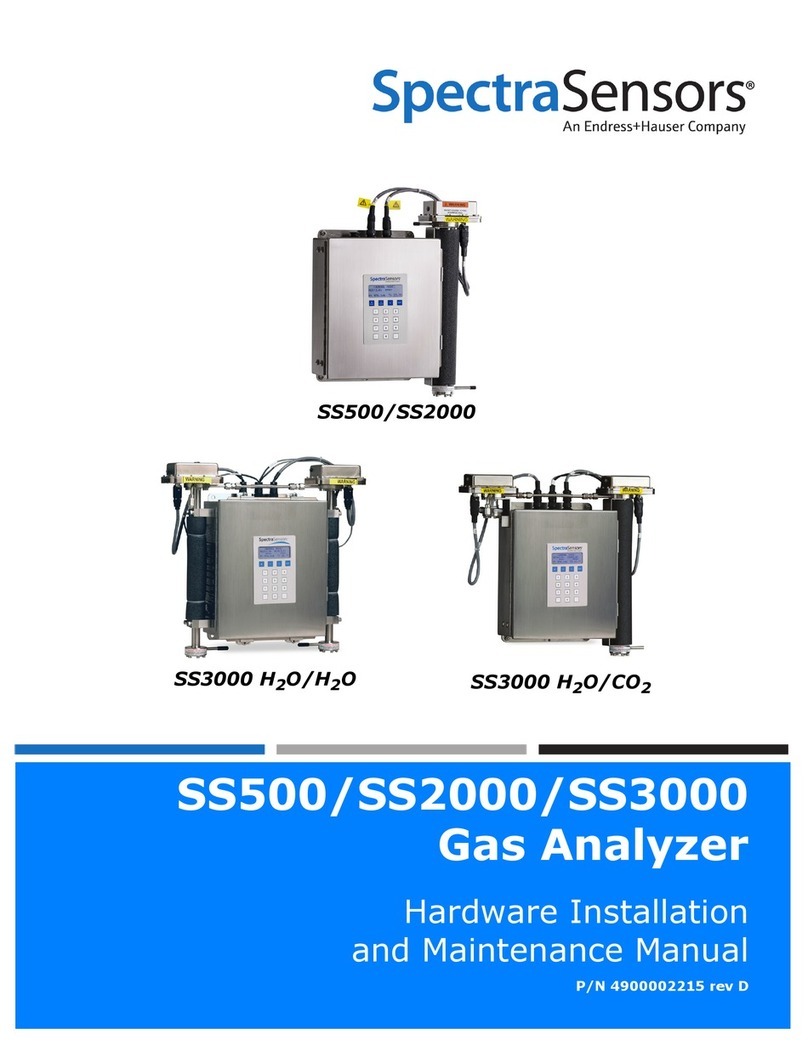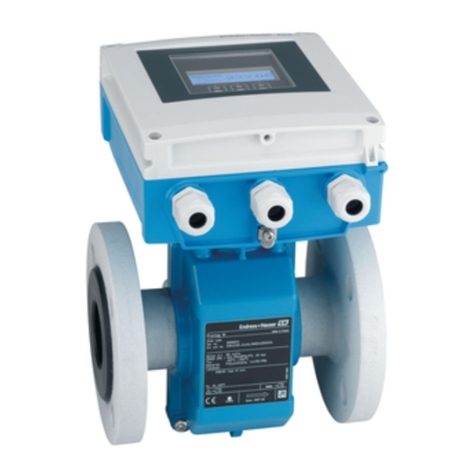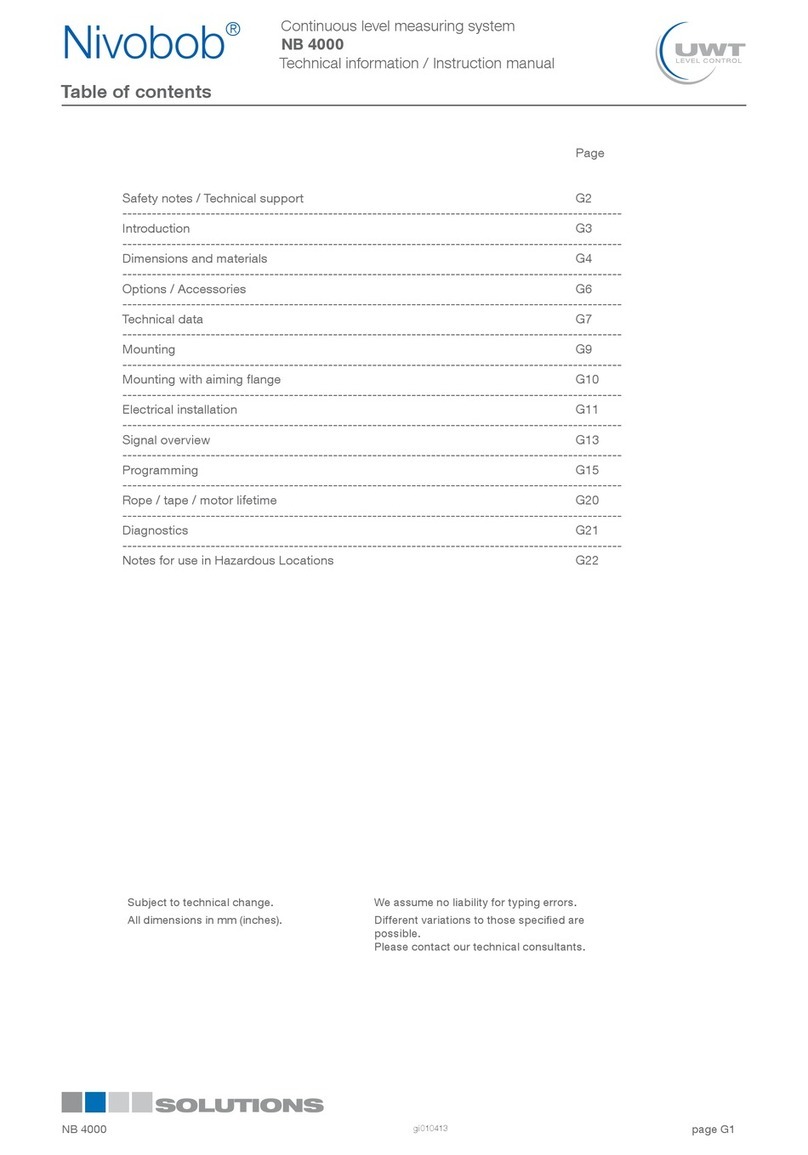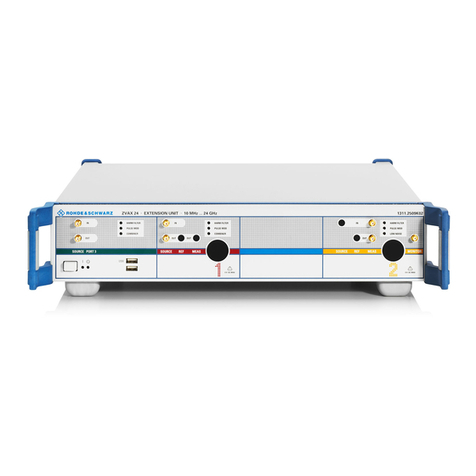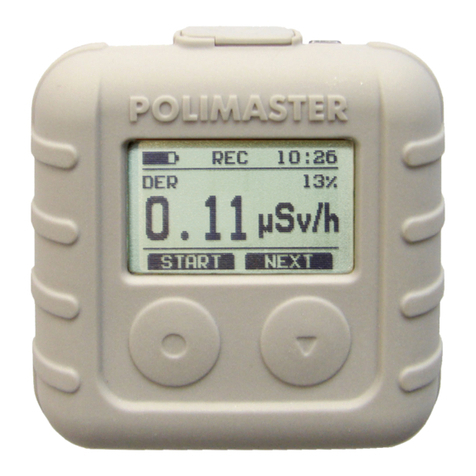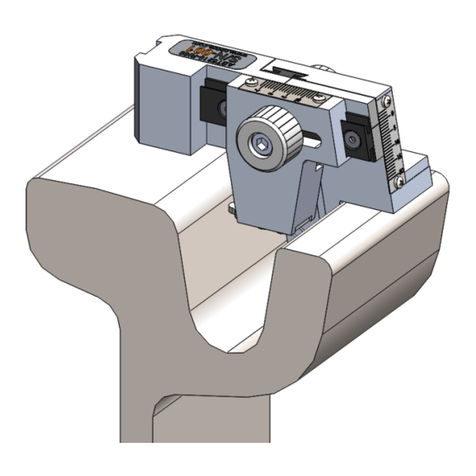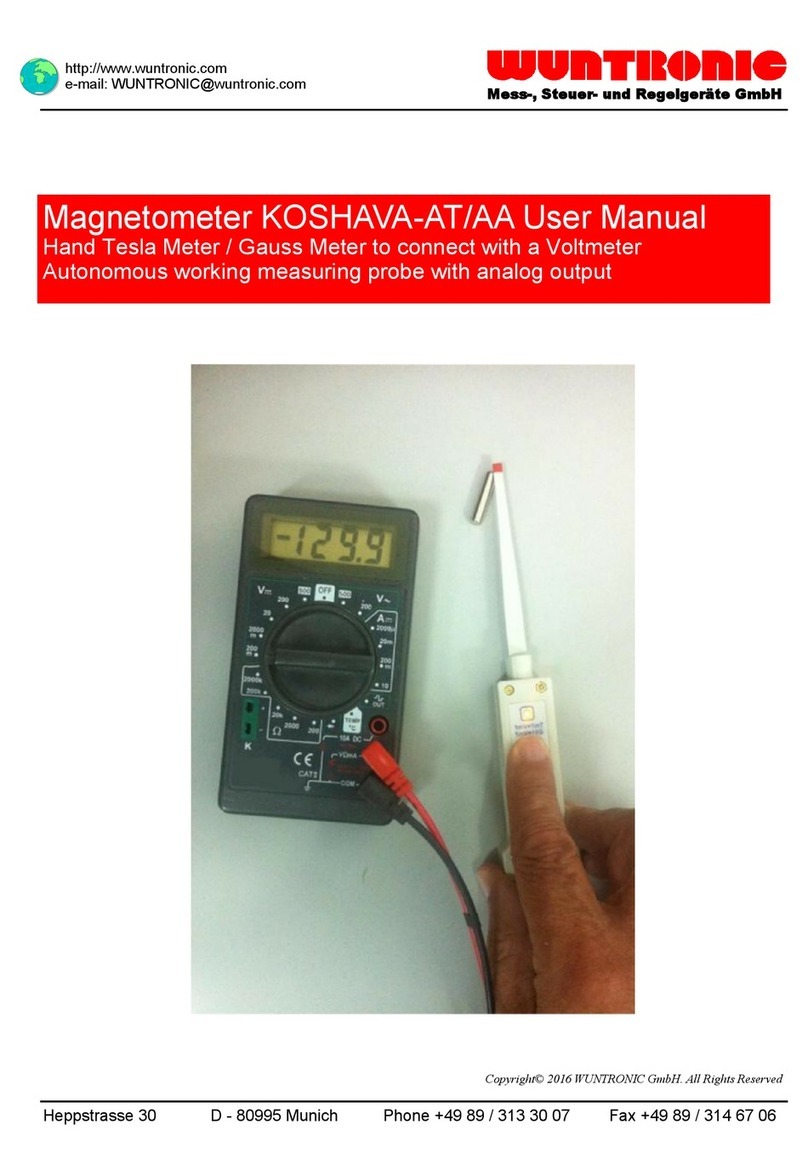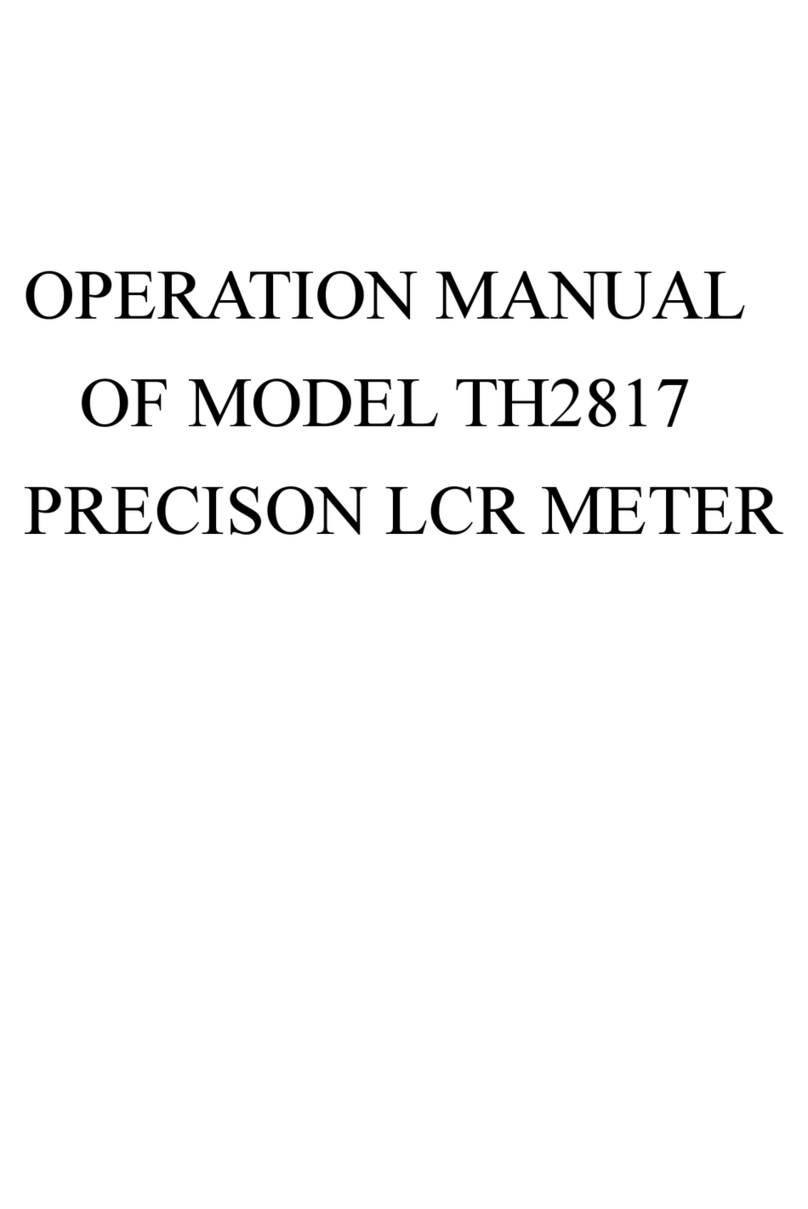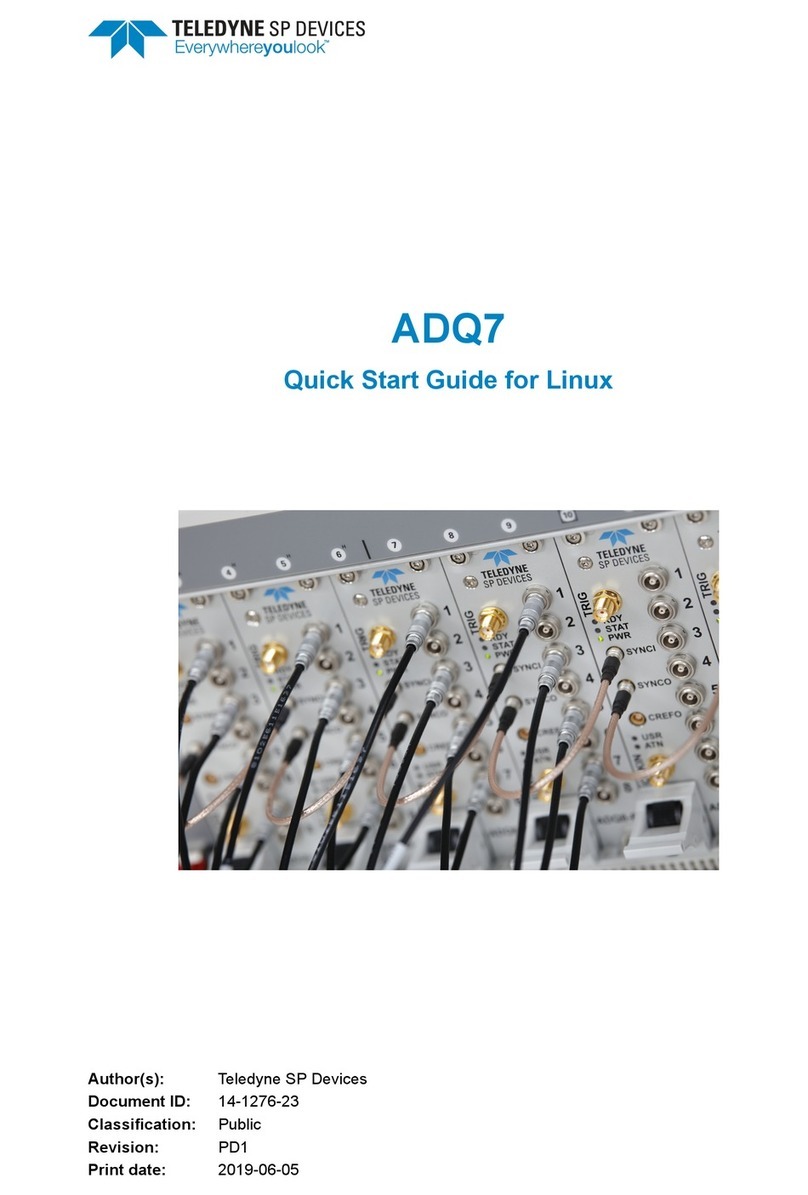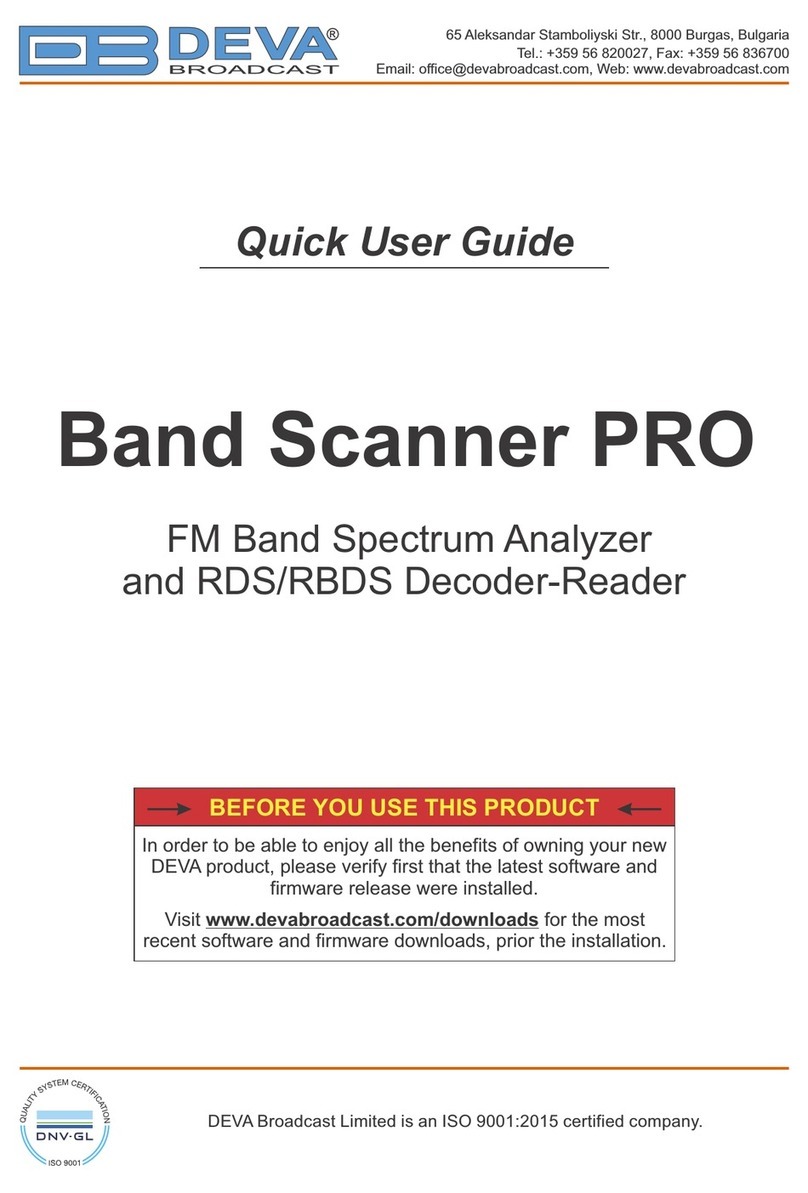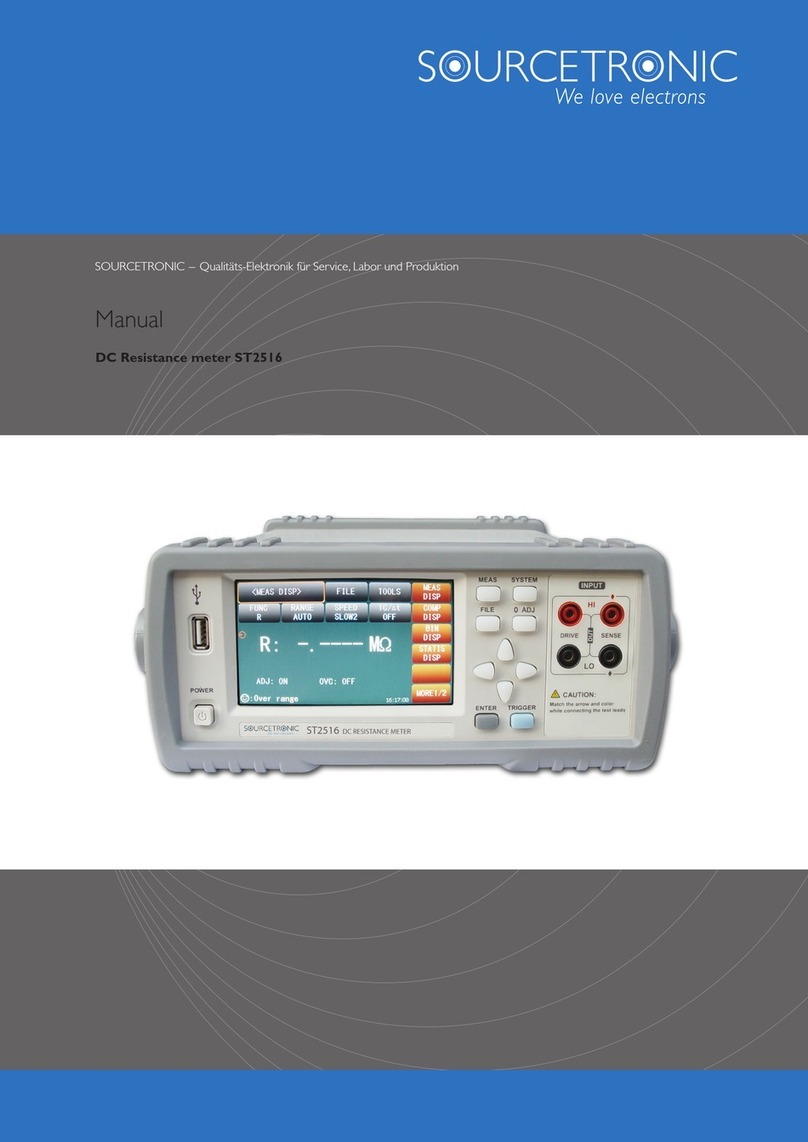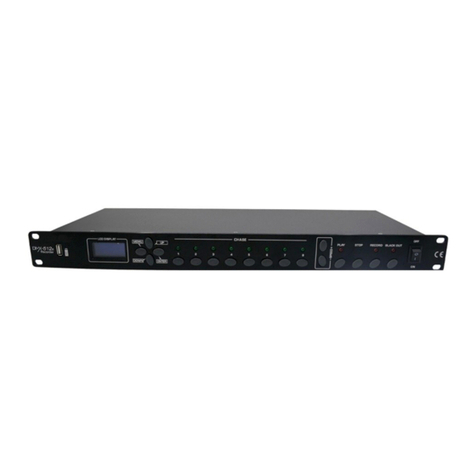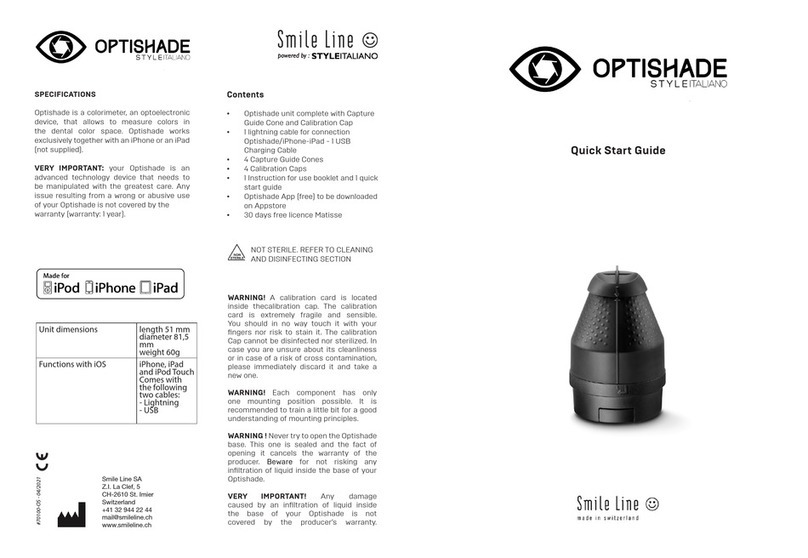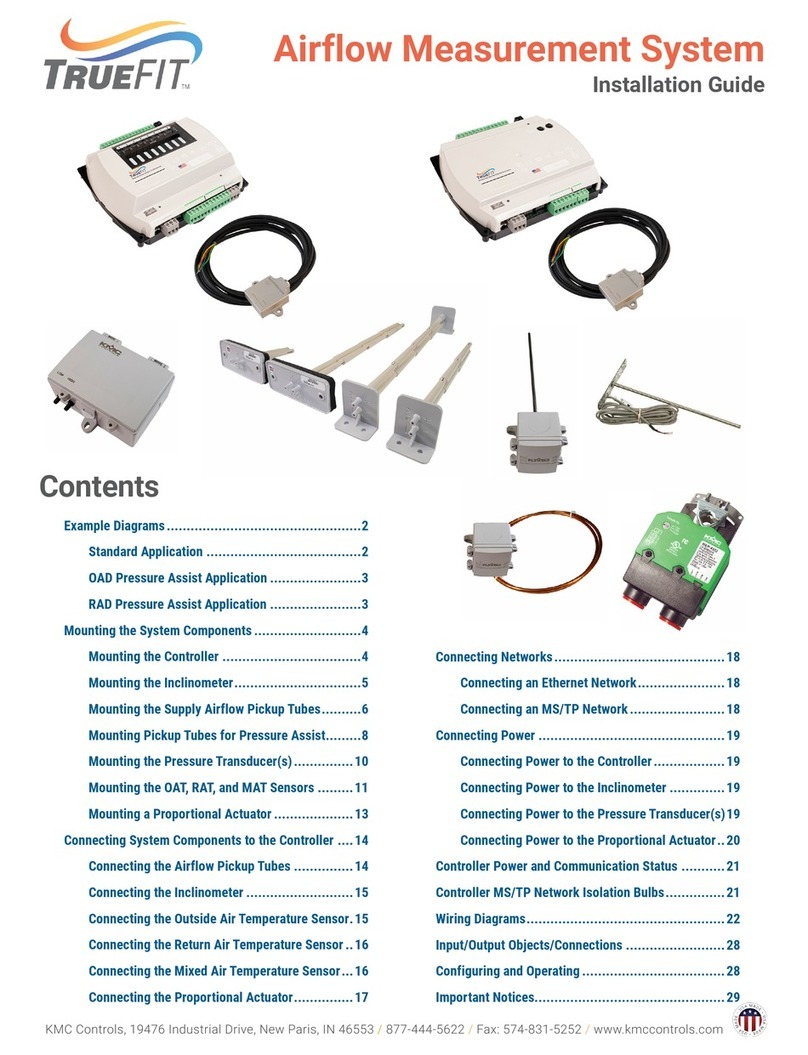Spectrasensors SS2100i-1 User guide

Products Solutions Services
4900002260 Rev C
Safety Manual
SS2100i-1 TDL Gas Analyzer
ATEX/IECEx: Zone 1
Copyright © 2020 SpectraSensors, Inc. No part of this manual may be reproduced in
whole or in part without the express written permission of SpectraSensors, Inc.
SpectraSensors reserves the right to change product design and specifications at any
time without prior notice.


Safety Manual i
TABLE OF CONTENTS
List of Figures/Tables. . . . . . . . . . . . . . . . . . . . . . . . . . . . . . . . . . . . . . . . iii
1: Introduction
Intended Equipment Use . . . . . . . . . . . . . . . . . . . . . . . . . . . . . . . . . . . . . . . . 1-1
How to Use This Manual. . . . . . . . . . . . . . . . . . . . . . . . . . . . . . . . . . . . . . . . . 1-1
Conventions Used in this Manual . . . . . . . . . . . . . . . . . . . . . . . . . . . . . . . . 1-1
Documents Provided with the SS2100i-1 Analyzer . . . . . . . . . . . . . . . . . . . . . . 1-2
SpectraSensors Overview . . . . . . . . . . . . . . . . . . . . . . . . . . . . . . . . . . . . . . . 1-2
Manufacturer Address . . . . . . . . . . . . . . . . . . . . . . . . . . . . . . . . . . . . . . . . . . 1-2
2: General Safety Information
General Warnings and Cautions . . . . . . . . . . . . . . . . . . . . . . . . . . . . . . . . . . . 2-1
Safety warning label. . . . . . . . . . . . . . . . . . . . . . . . . . . . . . . . . . . . . . . . . 2-1
Equipment labels . . . . . . . . . . . . . . . . . . . . . . . . . . . . . . . . . . . . . . . . . . . 2-2
Instructional symbols . . . . . . . . . . . . . . . . . . . . . . . . . . . . . . . . . . . . . . . 2-3
Analyzer Technical Specification . . . . . . . . . . . . . . . . . . . . . . . . . . . . . . . . . . . 2-3
Peripheral devices . . . . . . . . . . . . . . . . . . . . . . . . . . . . . . . . . . . . . . . . . . 2-3
Equipment rating . . . . . . . . . . . . . . . . . . . . . . . . . . . . . . . . . . . . . . . . . . . 2-4
Potential Risks Affecting Personnel . . . . . . . . . . . . . . . . . . . . . . . . . . . . . . . . . 2-6
Personnel responsibility . . . . . . . . . . . . . . . . . . . . . . . . . . . . . . . . . . . . . . 2-6
Mitigating risks . . . . . . . . . . . . . . . . . . . . . . . . . . . . . . . . . . . . . . . . . . . . 2-7
Exposure to process gases . . . . . . . . . . . . . . . . . . . . . . . . . . . . . . . . . . . . 2-7
Exposure to toxic gas (H2S) . . . . . . . . . . . . . . . . . . . . . . . . . . . . . . . . . . . 2-7
Electrocution hazard. . . . . . . . . . . . . . . . . . . . . . . . . . . . . . . . . . . . . . . . . 2-7
Explosion hazard . . . . . . . . . . . . . . . . . . . . . . . . . . . . . . . . . . . . . . . . . . . 2-8
3: Equipment Installation
Hardware and Tools for Installation. . . . . . . . . . . . . . . . . . . . . . . . . . . . . . . . . 3-1
Hardware . . . . . . . . . . . . . . . . . . . . . . . . . . . . . . . . . . . . . . . . . . . . . . . . 3-1
Tools . . . . . . . . . . . . . . . . . . . . . . . . . . . . . . . . . . . . . . . . . . . . . . . . . . . 3-1
Lifting/Carrying the Analyzer . . . . . . . . . . . . . . . . . . . . . . . . . . . . . . . . . . . . . 3-2
Mounting the Analyzer. . . . . . . . . . . . . . . . . . . . . . . . . . . . . . . . . . . . . . . . . . 3-2
Protective and chassis ground connections . . . . . . . . . . . . . . . . . . . . . . . . . 3-3
Electrical Wiring Requirements . . . . . . . . . . . . . . . . . . . . . . . . . . . . . . . . . . . . 3-3
External Circuit Breaker Requirements . . . . . . . . . . . . . . . . . . . . . . . . . . . . . . 3-4
Cable Installation . . . . . . . . . . . . . . . . . . . . . . . . . . . . . . . . . . . . . . . . . . . . . 3-4
Terminations . . . . . . . . . . . . . . . . . . . . . . . . . . . . . . . . . . . . . . . . . . . . . . 3-4
Unused cores . . . . . . . . . . . . . . . . . . . . . . . . . . . . . . . . . . . . . . . . . . . . . 3-5
Cable glands . . . . . . . . . . . . . . . . . . . . . . . . . . . . . . . . . . . . . . . . . . . . . . 3-5
Cables for fixed installations . . . . . . . . . . . . . . . . . . . . . . . . . . . . . . . . . . . 3-6
Inspecting the Analyzer . . . . . . . . . . . . . . . . . . . . . . . . . . . . . . . . . . . . . . . . . 3-6
Flameproof enclosure - protection type “d” . . . . . . . . . . . . . . . . . . . . . . . . . 3-7
4: Equipment Operation
Firmware Version . . . . . . . . . . . . . . . . . . . . . . . . . . . . . . . . . . . . . . . . . . . . . 4-1
Intermittent Operation . . . . . . . . . . . . . . . . . . . . . . . . . . . . . . . . . . . . . . . . . 4-1
Cleaning and Decontaminating the Analyzer. . . . . . . . . . . . . . . . . . . . . . . . . . . 4-1
To clean and decontaminate the analyzer for shipment or storage . . . . . . . . . 4-1
Exd Accessory Conditions of Use. . . . . . . . . . . . . . . . . . . . . . . . . . . . . . . . . . . 4-2
5: Equipment Maintenance and Service
Accessing the Measurement Cell . . . . . . . . . . . . . . . . . . . . . . . . . . . . . . . . . . . 5-6
Removing the electronics assembly . . . . . . . . . . . . . . . . . . . . . . . . . . . . . . 5-6

SS2100i-1 Analyzer
ii 4900002260 rev. C 12-9-20
Potentially Hazardous Substances . . . . . . . . . . . . . . . . . . . . . . . . . . . . . . . . . . 5-8
Disposal of hazardous substances . . . . . . . . . . . . . . . . . . . . . . . . . . . . . . . 5-8
Fuse Ratings and Characteristics . . . . . . . . . . . . . . . . . . . . . . . . . . . . . . . . . . 5-9
Service Contact . . . . . . . . . . . . . . . . . . . . . . . . . . . . . . . . . . . . . . . . . . . . . . 5-9

Safety Manual iii
LIST OF FIGURES/TABLES
FIGURES
Figure 5–1. Analyzer component overview . . . . . . . . . . . . . . . . . . . . . . . . . . 5-1
Figure 5–2. Components on electronics panel assembly (Upper level) . . . . . . . 5-2
Figure 5–3. Components on sample cell panel assembly (8/28 m sample
cell) (Lower level). . . . . . . . . . . . . . . . . . . . . . . . . . . . . . . . . . . 5-3
Figure 5–4. Components on sample cell panel assembly (0.8 m sample
cell) (Lower level). . . . . . . . . . . . . . . . . . . . . . . . . . . . . . . . . . . 5-4
Figure 5–5. Components on sample cell panel assembly (0.1 m sample
cell) (Lower level). . . . . . . . . . . . . . . . . . . . . . . . . . . . . . . . . . . 5-5
Figure 5–6. Electronics assembly panel . . . . . . . . . . . . . . . . . . . . . . . . . . . . 5-7
Figure 5–7. Accessing the measurement cell . . . . . . . . . . . . . . . . . . . . . . . . . 5-8
TABLES
Table 2-1. SS2100i-1 analyzer specifications . . . . . . . . . . . . . . . . . . . . . . . . 2-4
Table 3–1. Inspection Schedule for Ex “d”, Ex “e”, Ex “n”. . . . . . . . . . . . . . . . 3-7
Table 4–1. Exd accessory conditions of use . . . . . . . . . . . . . . . . . . . . . . . . . 4-2
Table 5–1. Fuse specifications for 120 VAC systems . . . . . . . . . . . . . . . . . . . 5-9
Table 5–2. Fuse specifications for 240 VAC systems . . . . . . . . . . . . . . . . . . . 5-9

SS2100i-1 Analyzer
iv 4900002260 rev. C 12-9-20
THIS PAGE INTENTIONALLY LEFT BLANK

Safety Manual 1–1
1 - INTRODUCTION
SpectraSensors’ SS2100i-1 products are high-speed, diode-laser based
extractive analyzers designed for extremely reliable monitoring of very low
(trace) to standard concentrations of specific components in various
background gases.
In order to operate the analyzer safely, it is important to closely review all
information contained in the manuals related to system installation, operation
and maintenance, as referenced in the documents and drawings provided with
the SS2100i-2 analyzer. This manual is divided into the following sections:
•General Safety Information (Chapter 2)
•Equipment Installation (Chapter 3)
•Equipment Operation (Chapter 4)
•Equipment Maintenance and Service (Chapter 5)
Intended Equipment Use
The analyzer is intended for use as instructed in the documentation package
provided with the equipment. The information provided should be read and
referenced by anyone installing, operating or having direct contact with the
SS2100i-1 analyzer. Any use of the equipment in a manner not specified by
SpectraSensors could impair the protection provided by the equipment.
How to Use This Manual
Take a moment to familiarize yourself with this manual by reading the Table
of Contents. This manual has been written to address the most common
safety issues related to the installation and operation of the SS2100i-1
analyzer. Additional information has been provided with the analyzer model
purchased to instruct qualified users in the installation, operation and
maintenance of the equipment.
Images, tables and charts have been included with instruction to provide a
visual understanding of the analyzer and its functions. Special symbols are also
used to provide the user with key information regarding the system
configuration and/or operation. Users should pay close attention to this
information.
Conventions Used in this Manual
In addition to the symbols and instructional information, this manual is created
with “hot links” to enable the user to quickly navigate between different
sections within the manual. These links include table, figure and section
references and are identified by a pointing finger cursor when rolling over
the text. Simply click on the link to navigate to the associated reference.

SS2100i-1 Analyzer
1–2 4900002260 rev. C 12-9-20
Documents Provided with the SS2100i-1 Analyzer
Each SS2100i-1 analyzer shipped from the factory is packaged with documents
specific to the model that was purchased. At a minimum, the documents
included with each shipment are:
•Safety Manual
•Hardware Manual
•Firmware Manual
•System Drawings
•Calibration Certificate
SpectraSensors Overview
SpectraSensors, Inc. is a leading manufacturer of advanced optical gas
analyzers. Headquartered in Houston, Texas, SpectraSensors was
incorporated in 1999 as a spin-off of the NASA/Caltech Jet Propulsion
Laboratory (JPL) for the purpose of commercializing space-proven
measurement technologies initially developed at JPL. SpectraSensors was
acquired by the Endress + Hauser Group in 2012.
Manufacturer Address
SpectraSensors, Inc.
An Endress+Hauser Company
11027 Arrow Route
Rancho Cucamonga, CA 91730
United States
www.spectrasensors.com

Safety Manual 2–1
2 - GENERAL SAFETY INFORMATION
General Warnings and Cautions
Instructional icons are provided in this manual and on the SS2100i-1 unit to
alert the user of potential hazards, important information and valuable tips.
Following are the symbols and associated warning and caution types to observe
when servicing the analyzer. Some of these symbols are provided for
instructional purposes only and are not labeled on the system.
Safety warning label
The warning label shown below will be affixed to the front side of all analyzer
enclosures that contain sample gas.
Hazards may vary by stream composition. One or more of the following
conditions may apply.
Flammable. Gases used in the processing of this analyzer may
be extremely flammable. Any work in a hazardous area must be
carefully controlled to avoid creating any possible ignition sources
(e.g., heat, arcing, sparking, etc.).
Toxins. SpectraSensors analyzers measure a variety of gases,
including high-level H2S. Follow all safety protocols governing
toxic gases and potential leaks.
Inhalation. Inhaling toxic gases or fumes may cause physical
damage or death.

SS2100i-1 Analyzer
2–2 4900002260 rev. C 12-9-20
Equipment labels
Technicians are expected to follow all safety protocols established
by the customer that are necessary for servicing or operating the
analyzer. This may include, but is not limited to, lockout/tag-out
procedures, toxic gas monitoring protocols, personal protective
equipment (PPE) requirements, hot work permits and other
precautions that address safety concerns related to performing
service or operation on process equipment located in hazardous
areas.
Warning statement for hazardous voltage. Contact may cause
electric shock or burn. Turn off and lock out system before
servicing.
Failure to follow all directions may result in damage or
malfunction of the analyzer.
Maximum voltage and current specifications for the fuse closest
to label.
PROTECTIVE EARTH GROUND - Symbol indicates the
connection point of the ground wire from the main power source.
FUNCTIONAL EARTH GROUND - Symbol indicates grounding
points intended primarily for troubleshooting.
INVISIBLE LASER RADIATION - Avoid
exposure to beam. Class 3b Radiation Product.
Refer servicing to the manufacturer or qualified
personnel.
CAUTION
CLASS 3B INVISIBLE LASER
RADIATION WHEN OPEN
AVOID EXPOSURE TO THE BEAM

General Safety Information
Safety Manual 2–3
Instructional symbols
Analyzer Technical Specification
Refer to “Equipment rating” on page 2-4 for specifications related to the
SS2100i-1 analyzer.
Peripheral devices
For systems equipped with peripheral devices, e.g., probe assemblies, sample
conditioning system and heated sample transport lines, refer to the
documentation provided by the manufacturer for instruction on installation,
operation, etc.
Removing label from measurement cell optical
head will void analyzer warranty.
General notes and important information concerning the
installation and operation of the analyzer.
Failure to follow all directions may result in fire.
INVISIBLE LASER RADIATION - Avoid exposure to beam.
Class 3b Radiation Product. Refer servicing to the manufacturer-
qualified personnel.
Failure to follow all directions may result in damage or
malfunction of the analyzer.
Maximum voltage and current specifications for fuses.

SS2100i-1 Analyzer
2–4 4900002260 rev. C 12-9-20
Equipment rating
The following equipment rating information is provided for the SS2100i-1
Table 2-1 below. This information includes, but is not limited to, the following:
•Voltage and power rating
•Description of all input and output connections
•Environmental conditions for which the equipment is designed (i.e.,
environmental temperature range, environmental relative humidity)
•Degree of ingress protection (IP)
Table 2-1 SS2100i-1 analyzer specifications
Performance
Concentration See analyzer calibration report
Repeatability See analyzer calibration report
Measurement Time 1
1. Application dependent.
Typically less than 20 seconds
Application Data
Environmental Temperature
Range
–20 C to 50 C (–4 F to 122F) - Standard
–10 C to 60 C (14 F to 140F) - Optional
Heated Enclosure
Tem perat ure
50 C - Standard
60 C - Optional
Environmental Relative
Humidity
5% to 95%, Non-condensing
Altitude Up to 2000 m
Sample Cell Operating
Pressure
Typically 800 to1200 mbar - Standard
950 to 1700 mbar - Optional
Pressure to Cell 70 kPaG (10 PSIG) maximum to spectrometer cell
Sample Flow Rate 0.5 to 3 SLPM (0.02 to 0.11 SCFM) 1
Contaminant Sensitivity None for gas phase glycol, methanol, amines, or
mercaptans
Electrical & Communications
Input Power, Maximum 2
2. Supply voltage not to exceed 10% of nominal. Transient over-voltages according to
Overvoltage category II.
120 or 240 VAC 10%, 50/60 Hz standard; ~300W 1
Communications Analog: Isolated Analog channels, 1200 ohms at
24 VDC max
Outputs: Qty (2) 4 to 20 mA (measurement value)
Input: Qty (1) 4 to 20 mA (pipeline pressure) 1
Serial: Ethernet and RS-485 half-duplex - Standard

General Safety Information
Safety Manual 2–5
Table 2-1 SS2100i-1 Analyzer Specifications (Continued)
Electrical & Communications (Continued)
Digital Signals Outputs: (5); Hi/Lo Alarm, General Fault,
Validation Fail 1, Validation 1 Active 1, Validation 2
Active 1
Inputs: (2); Flow Alarm 1, Validation Request 1
Protocol Modbus Gould RTU, Daniel RTU or ASCII
Diagnostic Value Examples Detector Power (Optics Health), Spectrum
Reference Comparison and Peak Tracking
(Spectrum Quality), Cell Pressure and
Temperature (Overall System Health)
LCD Display Concentration, Cell Pressure, Cell Temperature
and Diagnostics
Physical Specifications
Electronics Enclosure IP66 copper-free aluminum with marine
environment RAL 7001 gray polyurethane
enamel finish; approximately 300 m final
thickness
Size 1670 mm H 489 mm W 377 mm D
(26.38” H 44.17” W 9.76” D)
Weight 1Approximately 86 Kg (190 lbs)
Sample Cell Construction 316L series polished stainless steel - Standard
Number of Sample Cells 1 per analyzer
Area Classification
Analyzer (Electronics and
Laser)
CE, ATEX and IECEx: II 2 G, Exd IIB+H2
T4 GB; LCIE 11 ATEX 3071X 2, IECEx LCI
11.0057X 2; Directive 2014/34/EU
1. Dimensions are for analyzer only.
2. Including an “X” after the certificate number indicates that the product is subject to
the Special Conditions of Use specified in the schedule to this certificate. Refer to the
Special Conditions of Use under the relevant certification prior to installation or use.

SS2100i-1 Analyzer
2–6 4900002260 rev. C 12-9-20
Potential Risks Affecting Personnel
This section addresses the appropriate actions to undertake before or during
service of the analyzer when faced with hazardous situations such as exposure
to process gases, electrocution, explosion or fire. It is not possible to list all
potential hazards within this document. The user is responsible for identifying
and mitigating any potential hazards present when servicing the analyzer.
Personnel responsibility
Operatives/technicians shall possess, to the extent necessary to perform their
tasks, the following:
•Understanding of the general principles of explosion protection
•Understanding of those aspects of equipment design that affect the
protection concept
•Understanding of the certificate contents and relevant parts of the
standard associated with the product
•General understanding of inspection and maintenance requirements
of IEC 60079-17
•Familiarity with the particular techniques to be employed in the
selection and installation of equipment in the standard
•Understanding of the additional importance of permit to work
systems and safe isolation in relation to explosion protection
Technicians are expected to follow all safety protocols established
by the customer that are necessary for servicing the analyzer.
This may include, but is not limited to, lockout/tagout procedures,
toxic gas monitoring protocols, PPE requirements, hot work
permits and other precautions that address safety concerns
related to performing service on process equipment located in
hazardous areas.
The safety of the analyzer is the responsibility of the installer and
the organization he/she represents.

General Safety Information
Safety Manual 2–7
Mitigating risks
Refer to the instructions for each situation listed below to mitigate associated
risks.
Exposuretoprocessgases
1. Shut off the process gas to the analyzer before any service that
would require opening a part of the sample plumbing.
2. Purge the system with nitrogen.
3. Shut off the nitrogen purge before opening any part of the sample
system.
Exposuretotoxicgas(H2S)
Follow the procedure below if there has been any suspected leak from the
sample system and accumulated SCS enclosure.
1. Purge the SCS enclosure to remove any potentially toxic gas.
2. Tes t th e H2S levels of the SCS enclosure using the port from the
safety purge kit to ensure the purge has cleared any toxic gas.
3. If no gas leak is detected, open the SCS enclosure door.
Electrocutionhazard
1. Shut off power at the main disconnect external to the analyzer.
2. Open enclosure door.
Technicians are expected to follow all safety protocols established
by the customer that are necessary for servicing the analyzer.
This may include, but is not limited to, lockout/tagout procedures,
toxic gas monitoring protocols, PPE requirements, hot work
permits and other precautions that address safety concerns
related to performing service on process equipment located in
hazardous areas.
Follow all safety protocols governing toxic gases and potential
leaks.
Complete this action before performing any service that requires
working near the main input power or disconnecting any wiring or
other electrical components.

SS2100i-1 Analyzer
2–8 4900002260 rev. C 12-9-20
If service must be performed with power engaged (gain adjustment, etc.):
1. Note any live electrical components and avoid any contact with
them.
2. Only use tools with a safety rating for protection against accidental
contact with voltage up to 1000 V (IEC 900, ASTF-F1505-04, VDE
0682/201).
Explosion hazard
Any work in a hazardous area must be carefully controlled to avoid creating any
possible ignition sources (e.g., heat, arcing, sparking, etc.). All tools must be
appropriate for the area and hazards present. Electrical connections must not
be made or broken with power on (to avoid arcing).

Safety Manual 3–1
3 - EQUIPMENT INSTALLATION
Hardware and Tools for Installation
Depending on the particular model, the configuration of accessories and
options ordered, you may need the following specific hardware and/or tools to
complete the installation process.
Hardware
•Mounting hardware
•Stainless steel tubing (SpectraSensors recommends using 1/4” O.D.
x 0.035” wall thickness, seamless 316L stainless steel electro polish
tubing)
•Mounting frame, or sturdy structure, designed with a safety factor of
4 (3500 N maximum load)
Tools
•8 mm Allen wrench
•8 mm ball point hex L-key
•10 mm ball point hex L-key
•5/32” high torque ball point hex L-key
•7/64” stainless steel ball point hex L-key
When an “X” is included after the certificate number, it indicates
that the product is subject to the Special Conditions of Use
specified in the schedule to this certificate. Refer to Table 2-1 on
page 2–4 for the certification listings. The entries into the
analyzer enclosure shall be equipped with certified accessories
(e.g., blanking element, breather/drainer, reducer, etc.).
The safety of the analyzer is the responsibility of the installer and
the organization he/she represents.
Configurations requiring optional accessories, e.g., probe
assemblies, with specific characteristics must meet manufacturer
specifications.
Mounting hardware used for wall-mounting the SS2100i-1 must
be able to support four times the weight of the instrument (86 kg
[190 lbs]) not including the sample conditioning system).

SS2100i-1 Analyzer
3–2 4900002260 rev. C 12-9-20
•9/16” angle double open-end wrench - 15 and 75 degree
•11/16” extra-long thin-head double open-end wrench
Lifting/Carrying the Analyzer
Before removing from the crate, move the analyzer as close as possible to the
final installation location. Due to the analyzer’s size and weight (approximately
86 Kg [190 lbs]), SpectraSensors recommends the use of a forklift, pallet jack,
etc. to lift and/or move the analyzer.
Mounting the Analyzer
Refer to the outline and mounting diagram in the Hardware Manual provided
with the purchased SS2100i-1 analyzer for detailed mounting dimensions.
The SS2100i-1 is intended to be mounted to a wall or secured upright frame.
Secure the analyzer frame in position using bolts or screws of the size indicated
in the drawings included in the Hardware Manual provided with the analyzer.
Ensure all equipment used for lifting/moving the analyzer is rated
for the weight load.
SpectraSensors analyzers are designed for operation within the
specified ambient temperature range. Intense sun exposure in
some areas may impact the internal temperature inside the
analyzer enclosure; therefore, SpectaSensors recommends a
sunshade/canopy be installed over the analyzer if it is not
installed indoors.
When mounting the analyzer, be sure to position the instrument
so that it is not difficult to operate adjacent devices. Allow 1 m
(3 ft) of room in front of the analyzer.
Each bolt and screw used for wall-mounting the SS2100i-1 must
be able to support four times the weight of the instrument
(approximately 86 kg [190 lbs]).
It is critical to mount the analyzer so that the supply and return
lines reach the supply and return connections, while still
maintaining flexibility, so that the sample lines are not under
excessive stress.

Equipment Installation
Safety Manual 3–3
Protectiveandchassisgroundconnections
Before connecting any electrical signal or power, the chassis ground must be
connected. Safety requirements for the protective and chassis grounds are as
follows:
•The protective and chassis grounds must be of equal or greater size
than any other current-carrying conductors.
•The protective and chassis grounds must remain connected until all
other wiring is removed.
•If the protective and chassis grounds are insulated, it must use the
green/yellow color.
Refer to system drawings for exact locations of the chassis ground connections.
1. Connect the chassis ground to the marked bottom right corner of the
right-side enclosure.
2. Connect the system ground to the ground bus bar as shown in Figure
5–2 on page 5–2 during the electrical power connection. Refer to the
SS2100i-1 Hardware Manual (P/N 4900002224) for instruction.
Electrical Wiring Requirements
External Circuit Breaker Requirements
Failure to properly ground the analyzer may create a high-voltage
shock hazard.
Interconnection of the analyzer enclosure and cell enclosure shall
be accomplished using wiring methods approved for Class 1,
Division 2 hazardous locations as per the Canadian Electrical Code
(CEC) Appendix J and the National Electric Code (NEC) Article
501, or methods described in the Standard IEC/EN 60079-0 and
IEC/EN60079-14. The installer is responsible for complying with
all local installation codes.
Use copper conductors only.
An approved switch or circuit breaker rated for 15 amps should be
used and clearly marked as the disconnecting device for the
analyzer.

SS2100i-1 Analyzer
3–4 4900002260 rev. C 12-9-20
Cable Installation
To avoid potential damage, cable systems and accessories should be installed,
so far as is practicable, in positions that will prevent them from being exposed
to mechanical damage, to corrosion or chemical influences, to the effects of
heat and to UV radiation. If cables are subject to other conditions, e.g.,
vibrations or continuous flexing, they shall be designed to withstand that
condition without damage.
When cables are secured to equipment or cable trays, the bend radius on the
cable should be in compliance with the cable manufacturer’s data, or be at least
eight (8) times the cable diameter to prevent damage to the cable. The bend
radius of the cable should start at least 25 mm from the end of the cable gland.
The hazardous area end of each core in multi-core cables shall either be
connected to earth or be adequately insulated by means of terminations
suitable for the type of protection.
Terminations
Connections shall be made in a manner consistent with the type of terminal,
type of protection and not introduce undue stress on the connections.
If multi-stranded and, in particular, fine-stranded conductors are employed,
the ends shall be protected against separation of the strands, e.g., by means
of cable lugs, core-end sleeves or by the type of terminal, but not by soldering
alone.
Unused cores
The hazardous area end of each unused core in multi-core cables shall either
be connected to earth or be adequately insulated by means of terminations
suitable for the type of protection.
The external circuit breaker must be provided by the customer as
part of the equipment installation and shall meet the relevant
requirements of IEC 60947-1 and IEC. This switch or breaker
must be suitably located and easily reached (within 3 meters).
Insulation of multi-core cables by tape alone is not permitted.
The creepage distances and clearances shall not be reduced by
the method in which the conductors are connected to the
terminals.
Table of contents
Other Spectrasensors Measuring Instrument manuals
